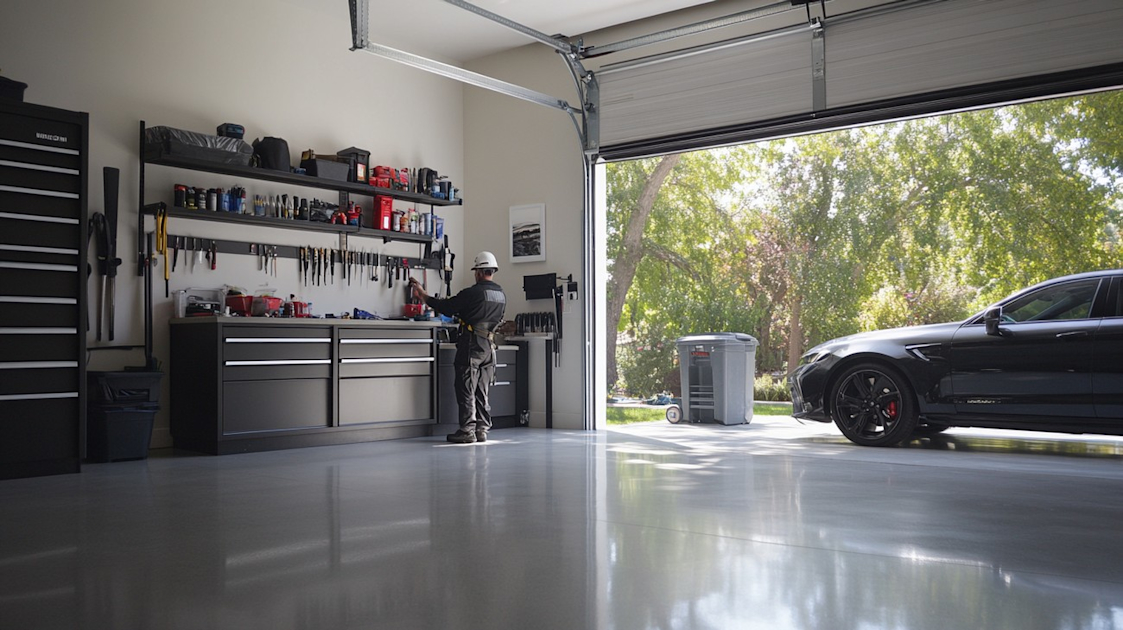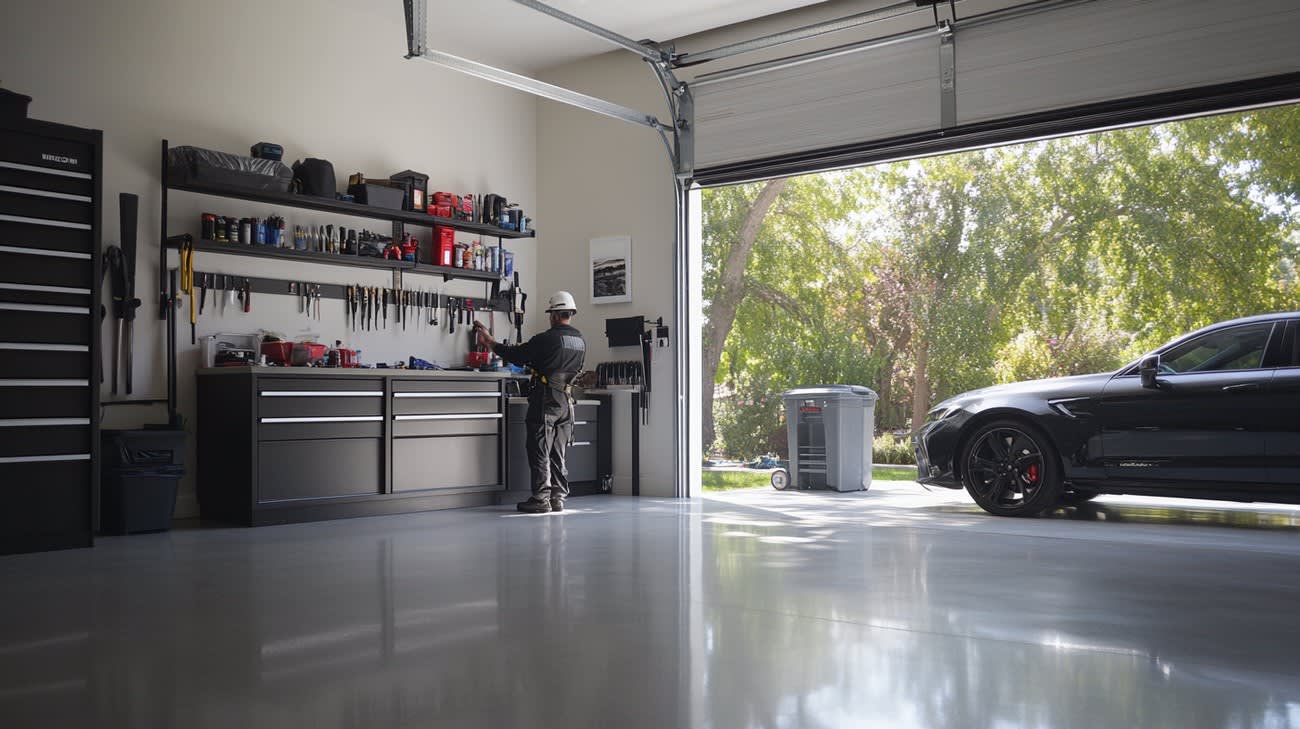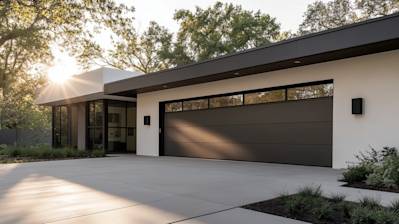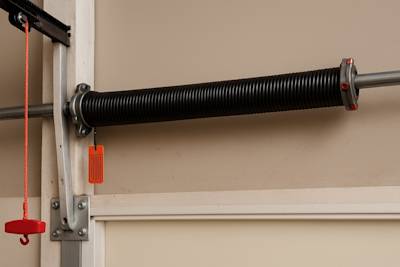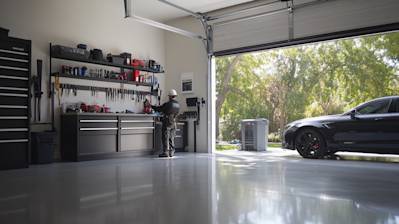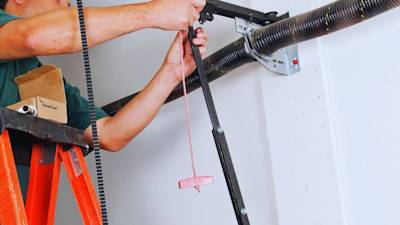Your garage door is a crucial part of your home. It not only complements your home's exterior but also safeguards vehicles and other valuable items. One of the significant components that ensure your garage door functions flawlessly are the springs. Overtime, these springs may require adjustments. This article will detail the process of adjusting garage door springs, providing a comprehensive step-by-step guide to help you.
Table of Contents
- Understanding the Types of Garage Door Springs
- Signs Your Garage Door Springs Need an Adjustment
- Tools Required for Adjusting Garage Door Springs
- Step by Step Guide on How to Adjust Garage Door Springs
- When to Call a Professional for Garage Door Springs Adjustment
- Conclusion
Understanding the Types of Garage Door Springs
Garage door springs come in two primary types:
Torsion Springs: Found above the closed garage door, these springs slowly twist and coil on the shaft whenever force is applied (via manually moving the door up or down).
Extension Springs: Located on either side of the door, these springs contract and expand whenever the door is moved up or down.
Signs Your Garage Door Springs Need an Adjustment
Here are some common symptoms that your garage door springs might need an adjustment:
- Difficulty when lifting the garage door
- The door doesn't stay up when opened half-way
- The garage door falls too quickly when closing
- Inconsistent or erratic movement when the garage door is operated
- Unusual or loud noise when operating the garage door
Tools Required for Adjusting Garage Door Springs
Safety is paramount when adjusting garage door springs. Make sure you have the following tools:
- Safety Glasses
- Gloves
- Winding bars (for torsion springs)
- C-Clamp
- Adjustable wrench
- Sturdy ladder
Step by Step Guide on How to Adjust Garage Door Springs
Adjusting Torsion Springs:
Step 1 - Prepare your tools Ensure that all your tools are at hand. Safety glasses and gloves are a must.
Step 2 - Secure the door Fasten the door with the c-clamp to prevent it from moving while you adjust the springs.
Step 3 - Position the ladder Align your ladder so you can comfortably work on the torsion spring.
Step 4 - Adjust the spring With your winding bars, add tension to the garage door springs. The number of turns depends on the height of your door. Generally it's a quarter turn for every foot of door height.
Adjusting Extension Springs:
Step 1 - Open the garage door Depending on their condition, you might need help to open the garage door.
Step 2 - Secure the door Employ c-clamps or locking pliers to secure the door in position.
Step 3 - Unhook the springs Locate the springs and carefully detach them.
Step 4 - Adjust and reattach the springs Depending on whether your door is difficult to lift or falls too quickly, you can move the hook to a lower or higher hole on the track hanger.
WARNING: always err on the side of caution and consult a professional if in doubt. Manipulating garage door springs can be dangerous if not handled correctly.
When to Call a Professional for Garage Door Springs Adjustment
Despite the usefulness of DIY knowledge, some situations necessitate professional expertise. Here are a few scenarios when you should call a professional:
- The springs are excessively rusted or corroded.
- You've attempted adjustment, but the issue persists.
- You feel unsure or uncomfortable adjusting the springs yourself.
- The garage door's movement remains erratic even after adjustment attempts.
Frequently Asked Questions about How To Adjust Garage Door Springs
How will I know if my garage door springs need adjusting?
If you notice that your garage door is not operating smoothly or seems out of balance, it might indicate that your garage door springs require adjustment. A door that hangs unevenly, for instance, is a telltale sign. Another clue is if the door does not stay in place when it is partially open.
What types of garage door springs might I be dealing with?
There are primarily two types of garage door springs: torsion springs and extension springs. Torsion springs are typically mounted horizontally above the door and provide force by coiling tightly. Extension springs, on the other hand, are found on the sides of the door and extend horizontally from the tracks when the door is in use.
Is adjusting garage door springs a task I can handle on my own?
While it's certainly possible to adjust your garage door springs yourself, it's important to proceed with caution. This task involves dealing with high tension springs that can cause serious injury if mishandled. It's recommended to get professional help to adjust garage door springs, particularly if you’re inexperienced in this type of work.
What tools do I need to adjust my garage door springs?
If you decide to adjust your garage door springs by yourself, you’ll need a few essential tools: a sturdy ladder, gloves, safety glasses, and two 10" vise grips. Torsion springs might also require winding bars, while extension springs might need an S-hook and adjustable pliers.
Can I adjust both torsion and extension garage door springs the same way?
No, the process for adjusting torsion springs differs significantly from adjusting extension springs. Torsion springs should be adjusted with the garage door lowered, while extension springs should be adjusted with the door open. It's vital to know which type of springs your garage door operates on before you begin adjustments.
How do I adjust extension garage door springs?
First, fully open your garage door and secure it with vice grips. Next, locate the S-hook that attaches the spring to the track and adjust it to change the spring's tension. To increase tension, move the hook closer to the front of the garage. To decrease tension, move the hook towards the rear.
How do I adjust torsion garage door springs?
When adjusting torsion springs, start by clamping the garage door track near the bottom and again, above the door's midpoint. This keeps the door from moving while you work. Then, mark the torsion spring with chalk and insert a winding bar into the bottom hole of the winding cone, located on the spring. Unwind the spring by moving the bar upward, then remove the bottom bar and insert the other one in the next hole down. This process should be repeated until the spring tension feels correct.
What safety measures should I take during garage door spring adjustment?
Always ensure you put on safety glasses and gloves. If you’re adjusting torsion springs, never stand directly in front or behind them, and always use the right size winding bars. If a spring breaks or slips while you are adjusting it, it can whip around and cause injury.
Can I over-tighten the garage door springs during adjustment?
Yes, this is a definite possibility. Over-tightening your garage door springs can lead to more tension than needed, making the door "heavy" for the opener. This can lead to further damage to your garage door system. If you’re uncertain, consult a trained professional.
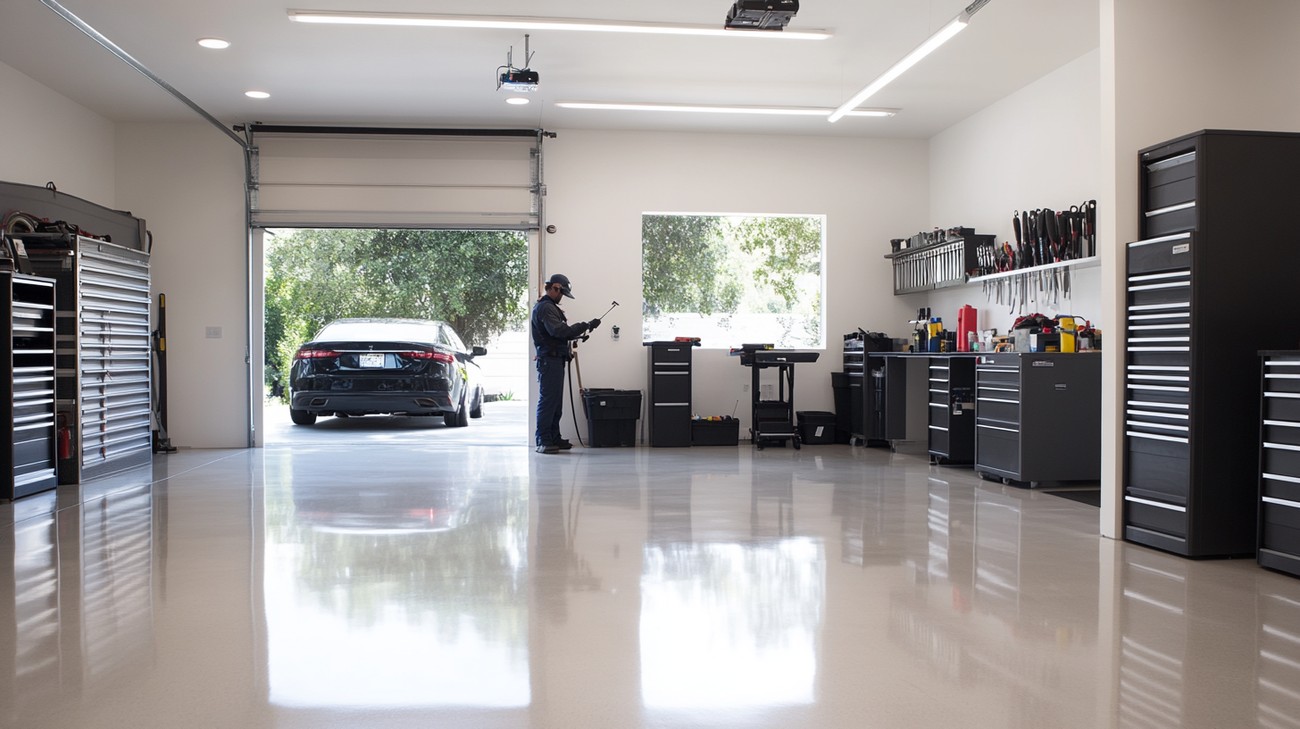
Pros of Adjusting Garage Door Springs
Savings
One of the biggest benefits of adjusting garage door springs yourself is the potential savings. By performing the task yourself, you can save the money that you would otherwise spend on a professional. Consider that hiring a professional for this type of job could run you in the ties of hundreds of dollars, even for a simple adjustment. This is something you can completely avoid if you do it yourself.
Upgrading Skills and knowledge
Adjusting a garage door spring can be an excellent way to upgrade your skills and knowledge about home maintenance and repairs. Doing such a task presents an opportunity to learn something new, which is always beneficial. Moreover, the hands-on experience you'll get is invaluable and could be applied to future tasks, reducing the overall maintenance cost of your home.
Improved Performance
When you adjust the garage door springs by yourself, you'll likely pay more attention to detail than a rushed professional. This allows you to optimize the performance of your garage door. You can even customize the tension to cater to your personal preference, giving you more control over your home's functionality.
Cons of Adjusting Garage Door Springs
Risk of Injury
Tackling the job of adjusting garage door springs yourself comes with a significant risk of injury. These springs are under an immense amount of tension, and one wrong move could cause them to snap, leading to serious injury. You might not have the necessary safety gear that professionals typically use for this kind of task, increasing the risk even further.
Time-Consuming
If you're not familiar with the task, you may spend a lot of time figuring out how to correctly adjust your garage door springs. This includes researching, reading instruction manuals, letting your tools in order, and performing the adjustment. This time might be better spent doing other activities, especially if you're not used to hands-on tasks.
Potential for Further Damage
As a novice, there's a higher chance you might damage the garage door or its components while trying to adjust the springs. This can end up costing you more money in the long run, as you will have to hire a professional to rectify the mess made.
Complicating Warranty
Your garage door or its components might be under warranty. By attempting to adjust the springs yourself, you risk voiding this warranty. If something goes wrong during your DIY project, the manufacturer might refuse to repair or replace the damaged part because it was not handled by a certified professional.
Lack of Proper Tools
Adjusting garage door springs requires specific tools, which many homeowners may not have in their home tool kits. Purchasing these tools can add an extra cost to your DIY project, possibly making it less cost-effective than hiring a professional. Additionally, improper tool use might lead to inadequate adjustments or even damage.

Myths and Misconceptions about Adjusting Garage Door Springs
In the world of home improvements and repairs, few tasks are as misunderstood and filled with myths as the adjustment of garage door springs. Spring-loaded garage door systems function as a counterbalance for the garage door, allowing it to open and close easily. When properly adjusted, they provide balance, a subtle touch indeed for such heavy doors. However, many people think adjusting these springs is a straightforward task. Here, we will walk you through the most common myths and misconceptions surrounding this.
Garage Door Springs are Just for Supporting the Door's Weight
While it’s true that garage door springs help the garage door opener lift the weight of the door, they aren't just about weight support. The springs also keep the garage door stable, prevent it from falling too quickly when being lowered, and make manual opening and closing easier. If garage door springs were only about supporting weight, the door could easily slam to the ground or fly up towards the ceiling.
Adjusting Garage Door Springs is Easy
Oftentimes, garage door adjustments appear as DIY projects on different learning platforms. While it’s possible to adjust your garage door springs yourself, it's not always as easy as some people think. The processes entail a lot more complexities, including precise measurements, and dismantling and reinstalling certain parts. Moreover, without the appropriate tools and knowledge, DIY adjustment can be dangerous as well.
All Garage Door Springs are the Same
This is a prevalent misconception among homeowners. There are two types of garage door springs: torsion and extension. Torsion springs are typically mounted above the garage door and slowly twist as the door is lowered. On the other hand, extension springs are attached alongside the overhead track and extend or contract as the door operates.
Torsion Springs are Better than Extension Springs
While torsion springs offer more balance and can handle larger doors, that doesn't necessarily mean they're superior. Each type of spring has its pros and cons. For example, extension springs are often less expensive and easier to install, making them a suitable choice for smaller, lighter doors.
You Only Need to Replace Springs When They Break
Waiting for springs to break before you replace them is akin to waiting for your car's engine to fail before you change its oil. Springs degrade over time and while they may not break, they can lose their tension, which affects the garage door balance. Therefore, springs should be replaced or adjusted regularly based on usage.
A Garage Door can Function with a Broken Spring
A garage door may open or close partially even with a broken spring, but it’s risky to continue using it this way. Firstly, operating a garage door with a broken spring can cause the opener to wear out prematurely. Secondly, the door could come crashing down at any time, increasing the risk of injury or vehicle damage.
You Can Adjust the Springs with Ordinary Tools
Garage door springs are heavy-duty components that need sturdy and particular instruments to adjust properly. Using ordinary hand tools could cause injury or damage to the door. Garage door professionals use winding bars, purpose-built to withstand the pressure of the springs, and other specialized tools.
Any Homeowner can Adjust Garage Door Springs
While we're advocates of DIY projects, garage door spring adjustment isn't for everyone. The assumption that any homeowner can carry out this task is dangerous. It requires a deep understanding of the door mechanism, the right tools, and an awareness of safety precautions. If you're not completely comfortable with the process, it's definitely safer to hire a professional.
Overall, adjusting garage door springs is a complex task fraught with many misconceptions. To ensure safety and efficiency, it's important to understand these myths and consult with an expert when needed.
Summary
Adjusting garage door springs isn't as overwhelming as it may appear. As long as you take safety precautions and follow the steps meticulously, it will be a smooth process. Start with identifying the type of spring system your garage door has, gather the necessary tools, and learning about how to adjust garage door springs. Remember that torsion springs need special care, but extension springs can be managed pretty decently with DIY skills.
By maintaining and adjusting garage door springs correctly, you don’t just ensure the right balance and alignment for your garage door, but also enhance its longevity. A well-balanced garage door is less prone to wear and tear and reduces mechanical strain on the opener. So, from safety and functionality perspectives, it is a good habit to periodically check if these springs require any adjustments.
Lastly, always put safety first. Garage door springs are under a lot of tension and can cause severe injury if they snap. If you feel uncomfortable adjusting them yourself, please don't hesitate to seek professional assistance. Even though adjusting them can seem like a bit of a hassle, remember, the routine maintenance can save you from a lot of inconvenience down the line. The time and effort you invest in learning how to adjust garage door springs is definitely worth it!
About 1A Garage Doors
1A Garage Doors is a family-owned and operated business serving Sacramento, CA and the surrounding areas. With a strong foundation of providing outstanding garage door services, we specialize in offering seamless installation, repair, and maintenance solutions. Our team of skilled professionals are well-equipped and trained to handle any garage door project, regardless of the size or complexity. With us, quality, reliability, and exceptional customer service are not just promises—they're guarantees! Not only do we pride ourselves in an impressive range of garage door styles and types, but we also ensure that we remain environmentally conscious in all our operations. With 1A Garage Doors, you can have peace of mind knowing your garage door needs are in capable hands.

